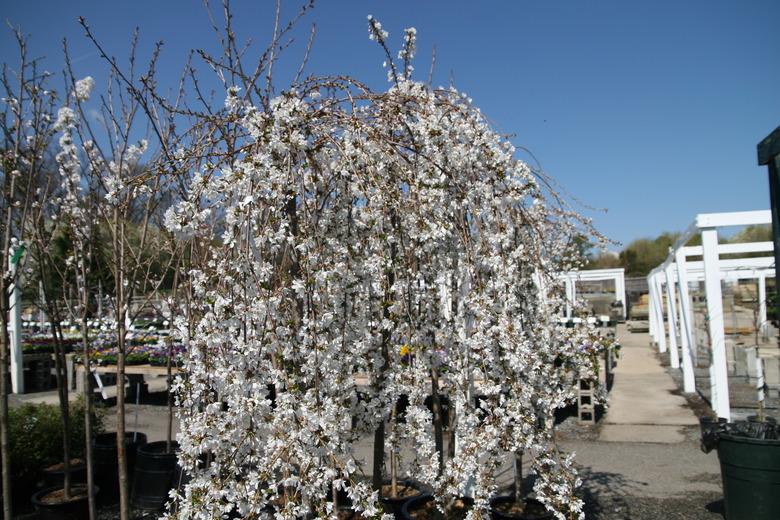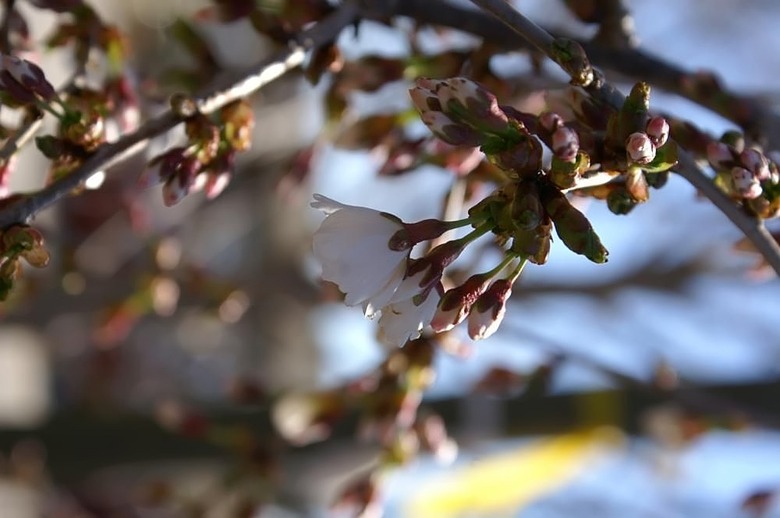How To Prune A Snow Fountains Weeping Cherry Tree
The Snow Fountains cherry tree (Prunus x subhirtella 'Snozofam' Snow Fountains®) is a trademarked ornamental cherry tree cultivar with a weeping habit. It is grown for its pure white flowers.
The Snow Fountains cherry tree is hardy in USDA plant hardiness zones 5 to 8.
Snow Fountains Weeping Cherry Identification
The Snow Fountains cherry tree is a flowering cherry tree that produces white blossoms in early spring. The weeping branches of this tree extend down to the ground for a stunning effect.
The Snow Fountains cherry is a deciduous tree, meaning it sheds its leaves in the fall. The leaves are dark green during the growing season. Its fall foliage colors are yellow and orange.
Snow Fountains Weeping Cherry Forms
Also known as the weeping Higan cherry, Snow Fountains weeping cherry trees can be either naturally weeping trees or grafted specimens. They are also grown as ground cover.
Naturally weeping trees are small trees that have a mature height between 8 and 15 feet. Grafted trees are typically grafted at 6 feet tall.
Growing a Snow Fountains Cherry Tree
The Snow Fountains weeping cherry tree flowers best when grown in full sun, which means at least six hours of direct sunlight a day.
As far as soil type goes, the Snow Fountain cherry grows best in loamy, moist, well-draining soil.
As a specimen, this tree will make a great focal point in your garden or courtyard.
Pruning a Snow Fountains Weeping Cherry
Snow Fountains cherry trees need minimal pruning to keep their shape and improve air circulation. It is best to prune after the tree is finished flowering to avoid interfering with the following season's bloom.
Tip
Light pruning to maintain the Snow Fountains weeping cherry tree's shape is best done after the tree is finished flowering.
As a general rule, the proper way to prune a Snow Fountains cherry tree will depend on whether you are growing a tree in its natural form or a tree that has been grafted onto different rootstock. You can tell if a tree has been grafted by looking for the graft union, which is a knotty bump on the trunk.
When pruning the natural form of the Snow Fountains cherry, it is important not to prune out any branches that are growing upward. With time, these branches fold over. However, when growing grafted trees, branches growing upward should be removed to maintain the tree's weeping appearance. However, no cuts should be made below the graft union.
Tip
If you are growing a natural form of the Snow Fountains cherry, you should not prune branches that grow upward. However, these branches can be pruned on grafted weeping trees.
Thinning Branches
The branches of weeping trees like the Snow Fountains cherry sometimes need to be thinned to remove heavy tangles of branches that can make these trees more susceptible to breakage. Any remaining branches should be distributed evenly around the tree. The thinning of branches is best done when the tree is dormant.
Weeping cherry trees like Snow Fountains may also need to be pruned to remove dead branches or branches that are diseased as well as branches that are rubbing against each other. This type of pruning can be done at any time.

